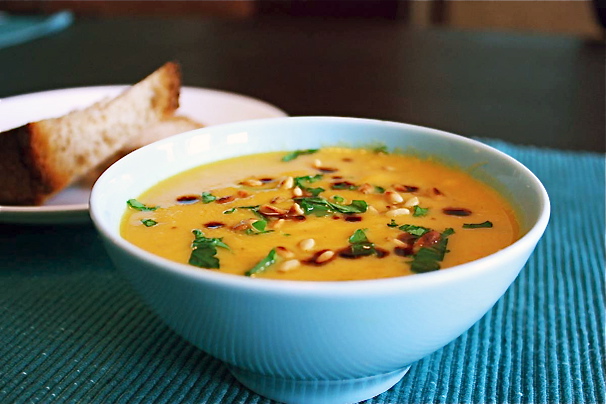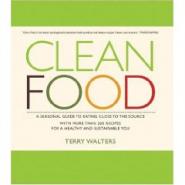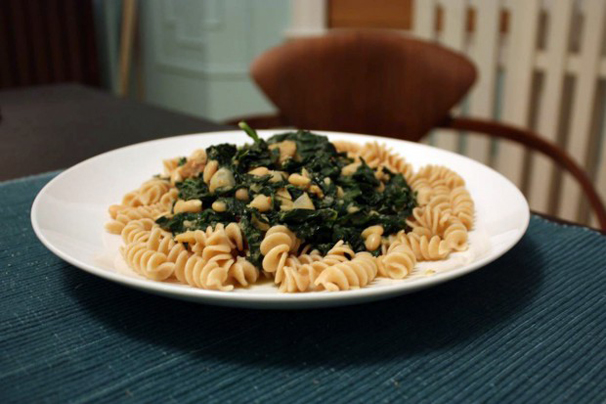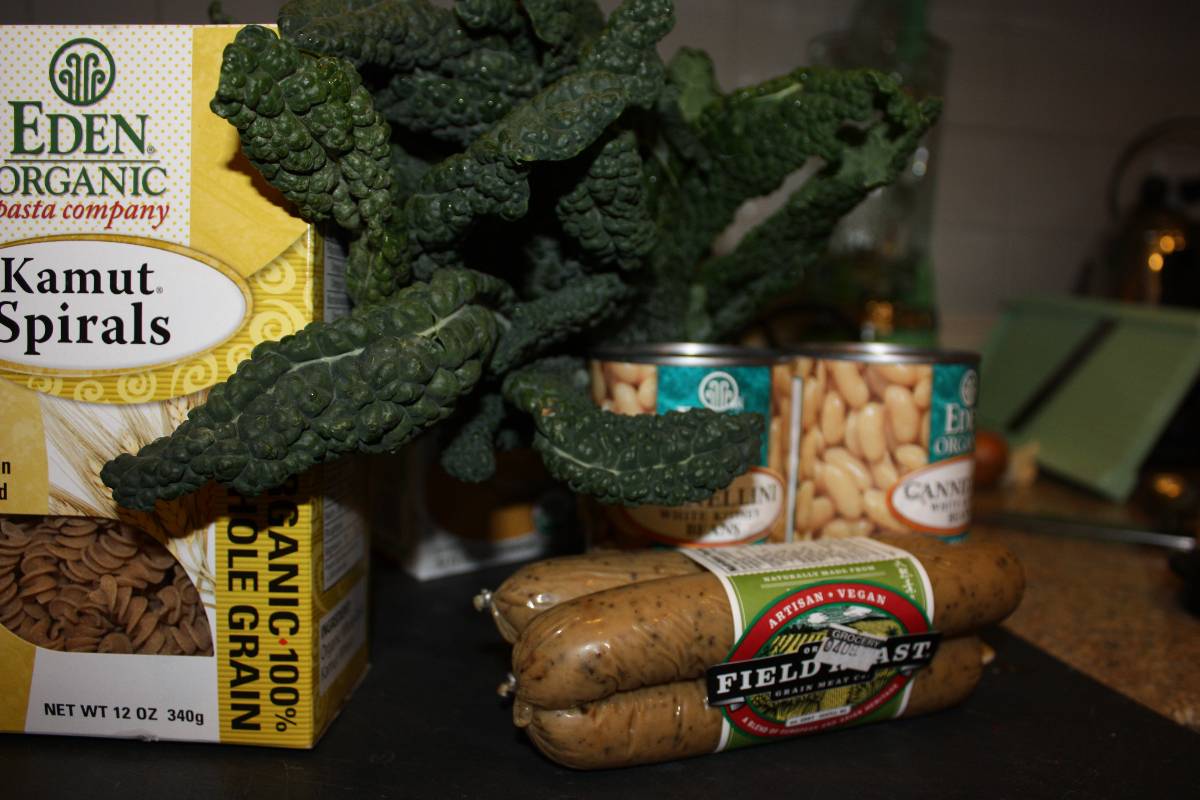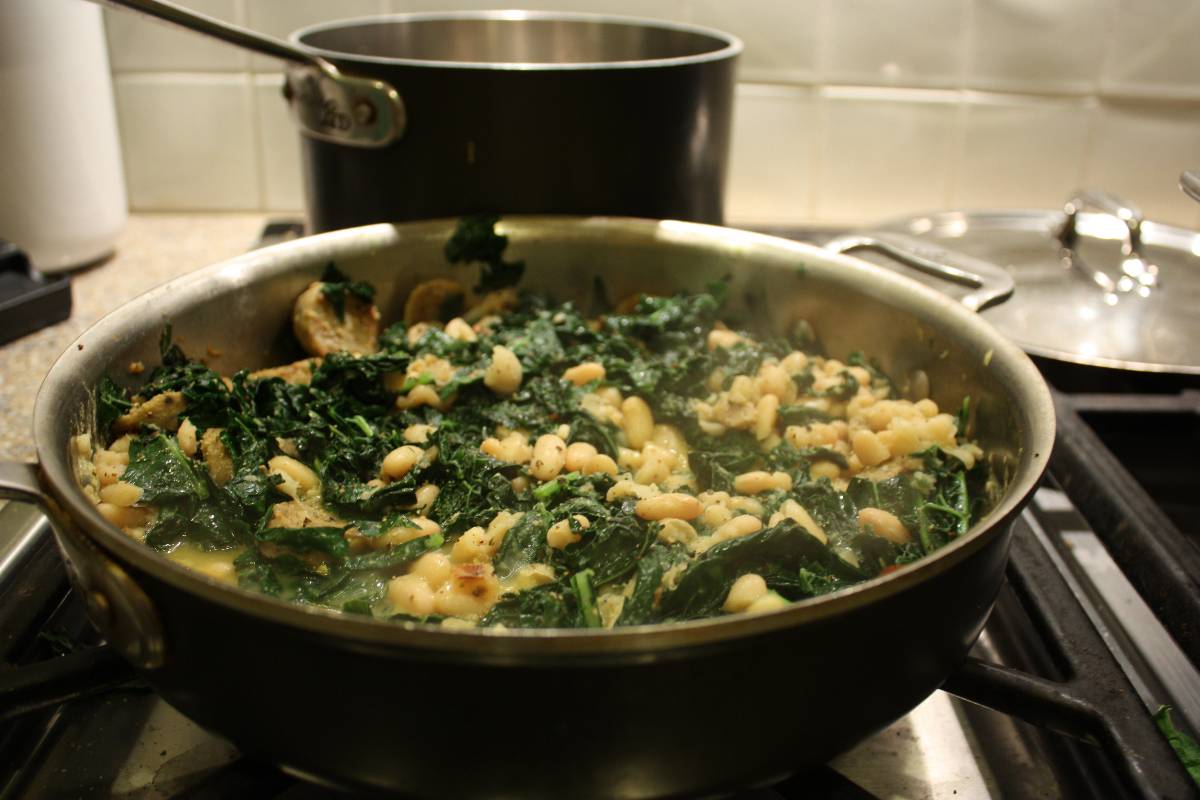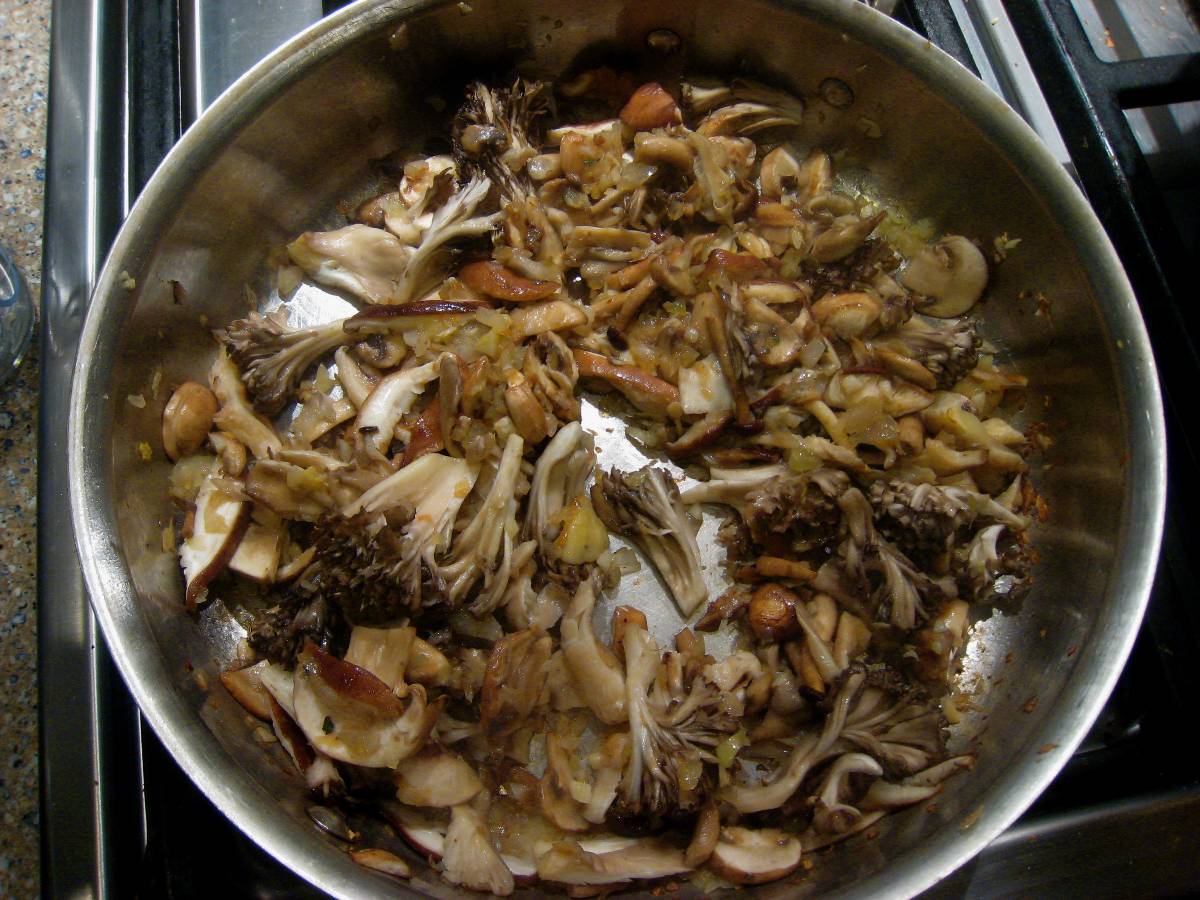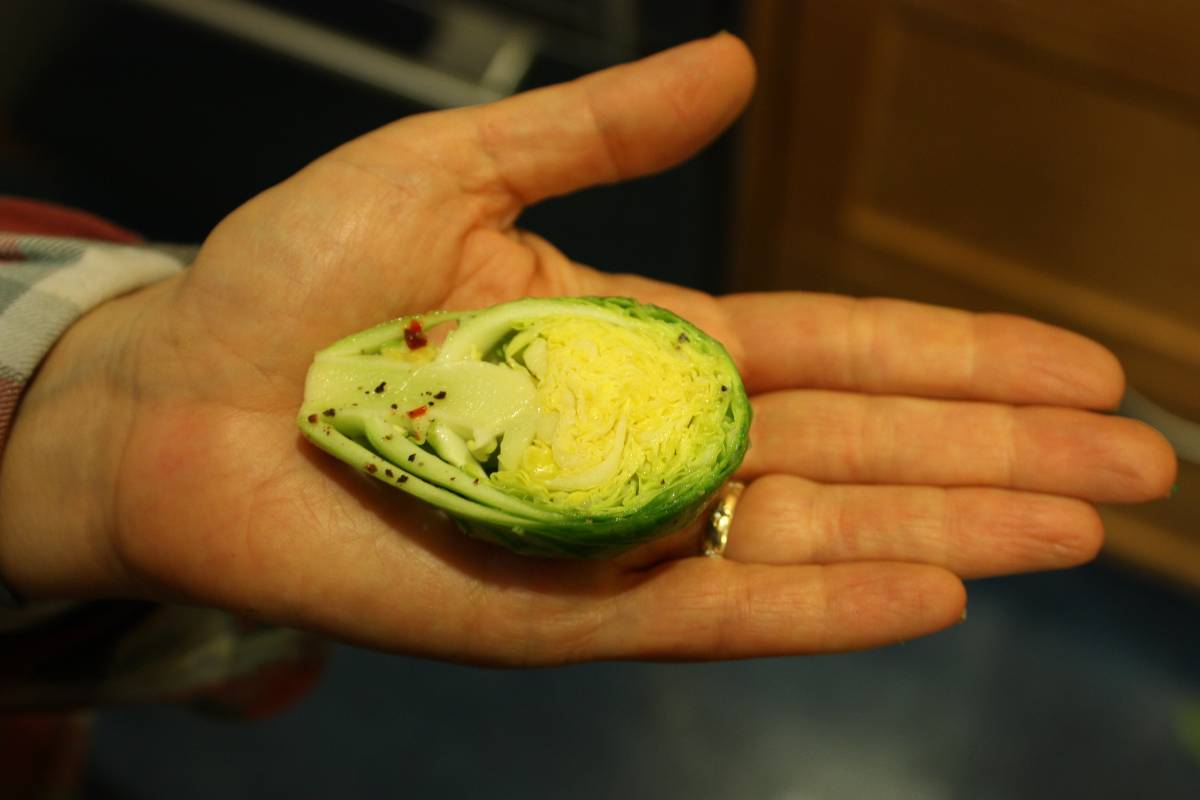Roasted winter vegetable soup
I was in one of my rare improvisational moods, so I made up this soup. In a nutshell, I chopped a bunch of winter vegetables, threw them in the oven with some olive oil, and then pureed the whole thing with stock. And much to my surprise, it came out great. Don’t forego the garnishes suggested here. The addition of pine nuts, parsley and balsamic vinegar took it to another level. If you have fig balsamic, all the better. This soup calls out for experimentation – scroll down for suggested variations.
Roasted winter vegetable soup
- 3 cloves garlic, peeled and left whole
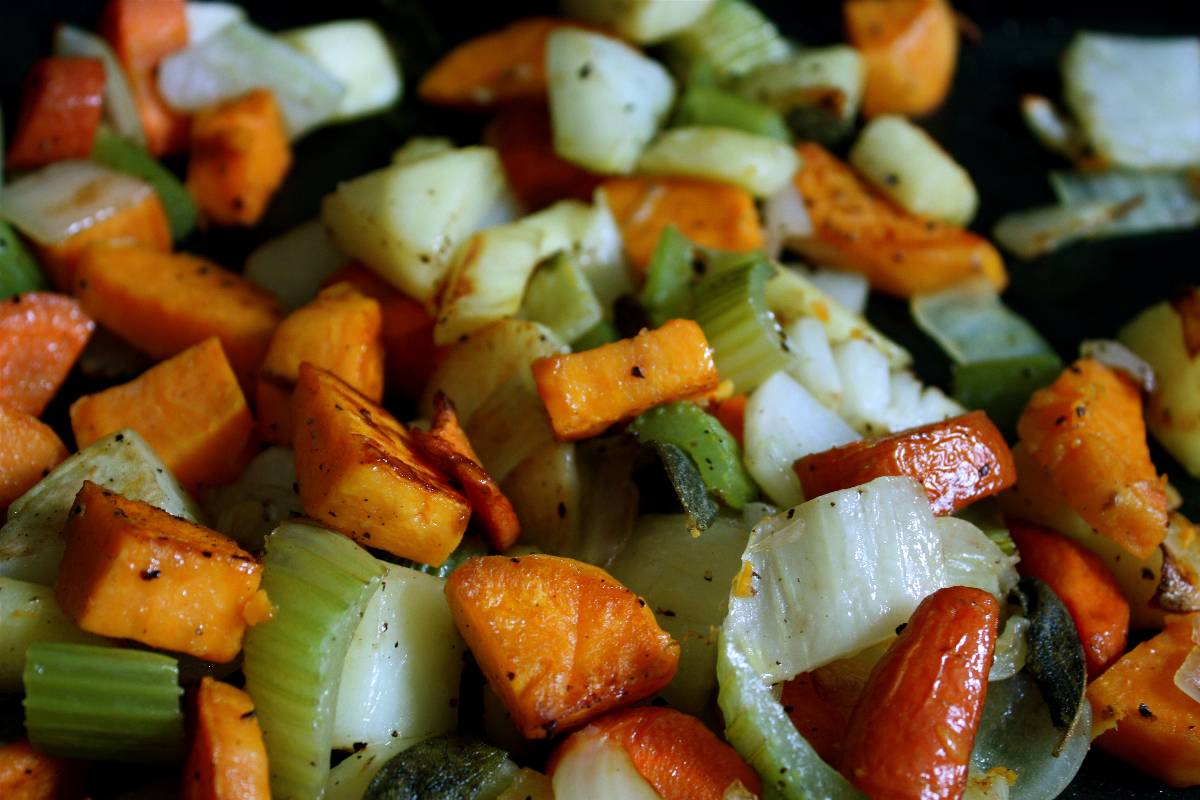
- 1 medium onion, roughly chopped
- 2 carrots, thickly sliced
- 1 parsnip, thickly sliced
- 1 large stalk celery, thickly sliced
- ½ small butternut squash, peeled and cubed (about 2 cups)
- 1 medium sweet potato, peeled and cubed
- ½ small fennel bulb, trimmed and cubed
- 10 whole fresh sage leaves
- 2 T. extra virgin olive oil
- Salt and freshly ground black pepper to taste
- 5-7 cups vegetable broth (use gluten-free broth if you are gluten-sensitive)
- Chopped flat leaf parsley, for garnish
- Toasted pine nuts, for garnish
- Aged balsamic vinegar, for garnish
Place the garlic, vegetables, sage and olive oil in a large roasting pan and stir to mix. Sprinkle with salt and pepper. Roast at 400 degrees for 35 minutes, turning once. Puree with stock in a food processor or blender. (The amount of stock you need depends on the amount of vegetables you end up with, so start with 5 cups and add more until you get the thickness you want.) Season with salt and pepper to taste. Reheat and serve, garnishing with pine nuts, parsley and a drizzle of balsamic vinegar.
Note: Feel free to vary the vegetables here – for instance, you could use celery root, turnips and cauliflower in place of the celery, fennel and sweet potato. If you want to spice things up, sauté 2 tsp. minced fresh ginger in 2 tsp. olive oil over low heat for two minutes, adding 1 tsp. each of ground cumin and coriander, plus a pinch of cayenne during the last minute. Add this mixture to the food processor when you are pureeing the soup.

